Angle grinders and sanders are the two universal power tools that can be used for DIY projects, construction sites, and farm work. They might look similar at first but still have some differences that you might overlook.
The question is, angle grinder vs sander, which tool is more suitable for your work? And when should you use these tools?
This article will provide a detailed comparison between these two tools, including some information on their purposes, PROs and CONs, the similarities between them, and which one you should use on your upcoming projects.
Contents
An Overview Of Angle Grinder

An angle grinder, whether corded or cordless, is a versatile power tool that can be used for various working conditions. It uses a rotating disc to cut, grind, or polish multiple types of materials. You can choose the disc type based on the working materials, like metal, wood, tile, concrete, etc.
Almost all angle grinders have at least one handle as the main handle, while some other models have a removable side handle for added stability and maneuverability.
An Overview Of Sander

A sander is an electric-powered tool that uses sandpaper to polish wooden surfaces or remove old paint on pieces of wood or wooden furniture.
This tool comes in many types, but the most popular ones are belt sanders, random orbital sanders, and palm sanders. The first type use belt-shaped square sand pads to move around two drums, while the two remaining ones use round sandpaper pads.
Angle Grinder Vs Sander: In-Depth Comparison
Key similarities
Both tools have a similar purpose – to remove unwanted materials embedded in resin or attached to paper or metal through friction and abrasion.
They also use a sanding disc, a sandpaper pad, or a grinding blade attached to do the material removal work. Then, the electric motor on these two tools will get the job done in a shorter time with less labor effort than manual grinding.
Key differences
| Angle grinder | Sander | |
| Application | Cutting, sanding, polishing, rough shaping. | Sanding, refined shaping, polishing. |
| Materials | Soft and hard materials. | Soft materials (like wood). |
| Attachments | Many disc types and disc sizes. | Flexible sandpaper pads. |
| Precision | Low or high precision according to the specific job. | Low precision for finishing jobs. |
| Safety | More dangerous as the disc rotates at high speed. | Safer due to lower power |
1. Application/Versatility
Sanders can only be used for sanding, refined shaping, polishing wooden surfaces, or removing paint on wooden furniture. To polish and buff other materials like metal, you need to choose appropriate attachments and run the tool at the right speed for your sander.
Angle grinders are more versatile. They can handle many types of jobs, like removing paint, cutting hardened steel. In general, angle grinders can be used for cutting, sanding, polishing, or rough shaping on many types of materials like plastic, wood, metal, stone, and concrete. Eventually, you can use a sanding disc or sanding brush for grinding jobs.
2. Materials to handle
Both these two power tools can work on many materials. Generally, angle grinders can cut, shape, or repair hard materials like metal, while sanders are mainly used on softer materials like wood.
3. Attachments
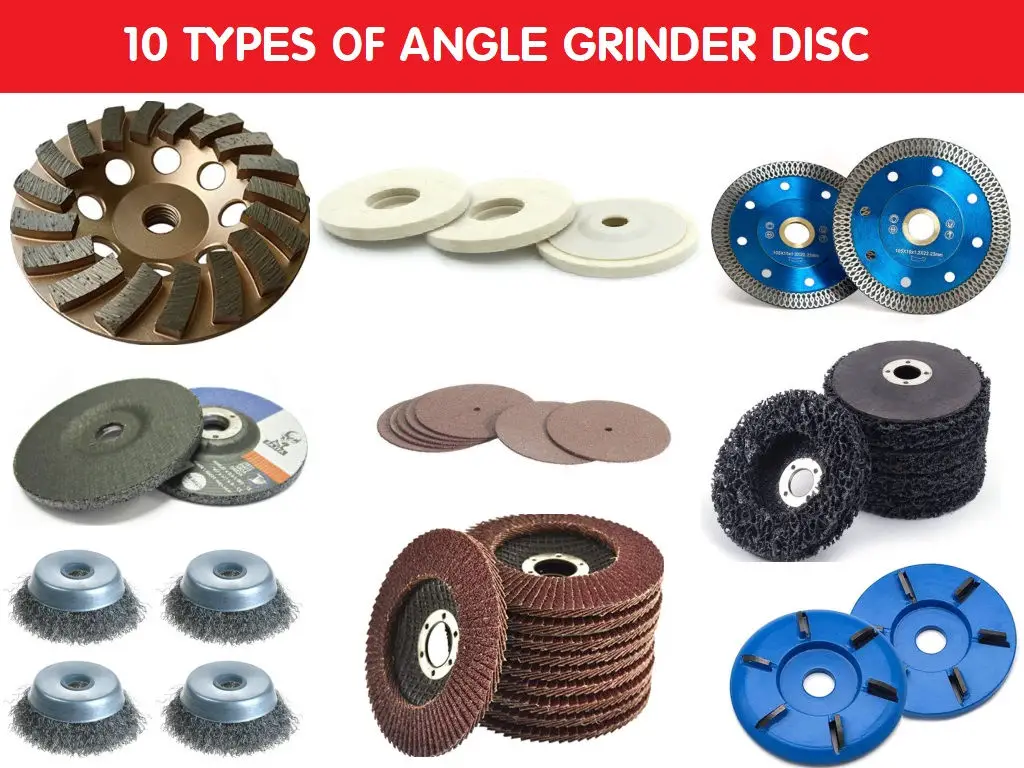
Angle grinders can go with many disc types and disc sizes for specific project requirements. For example, you can choose a popular 4.5-inch sanding disc for most polishing projects on your property.
Sanders use flexible sandpaper pads or belts attached with Velcro or clips for sanding jobs. Sandpaper comes in different grit numbers (or the size rating of the abrasive materials on the paper):
- Micro grit sandpaper: ultra-fine (800/1000), superfine (400/500/600), extra fine (360/320).
- Macro grit sandpaper: very fine (150/180), fine (100/120), medium (80), coarse (40/50/60), extra coarse (24/30/36).
Apart from grit number, you can choose the size of the sandpaper based on the size of the projects you are handling.
4. Precision
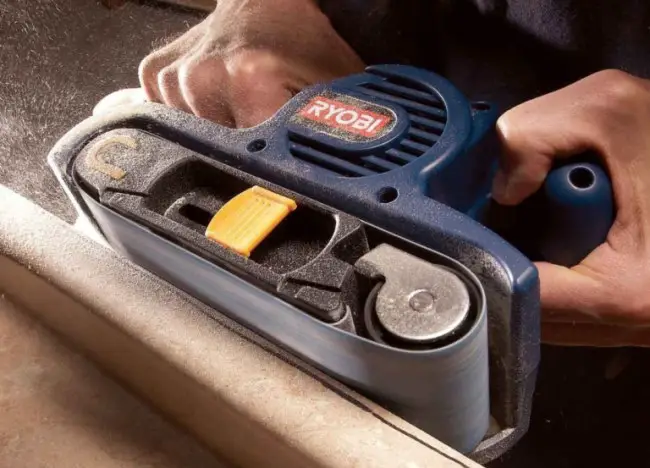
Sanders offer different levels of precision based on the working areas. For instance:
- Sanding extensive areas with a belt sander with less precise.
- Sanding small areas (for example, delicate polishing projects) with a higher precision level.
Angle grinders provide a lower precision level than sanders. Due to their high power, they can cut through rough materials in a few minutes but can’t offer a high precision level for detailed finishing jobs.
5. Safety
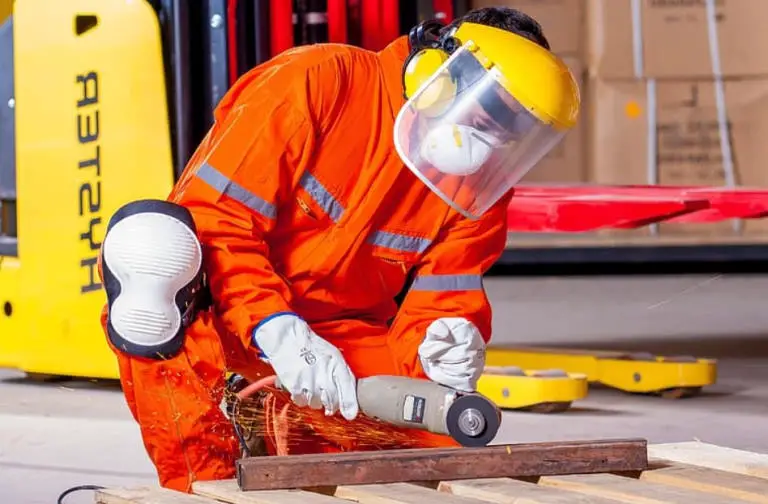
Since both angle grinders and sanders are electrically powered, they are not 100% safe. Thus, you should wear proper Personal Protective Equipment (PPE) while working with these tools to protect yourself from unwanted injuries or accidents.
When comparing an angle grinder vs a sander, the former is more dangerous than the latter since it uses a sharp disc rotating at high speed (RPM). Even if you are an experienced user, you can suffer from kickback or hurt on your flesh and bones if you don’t strictly follow safety guidelines and cautions, use the wrong disc for cutting materials, or choose the incorrect speed.
Besides, you can also experience burns when the generating hot sparks from your angle grinder catch inflammable materials or objects nearby.
A sander seems safer since it is a light-duty, lower-powered tool. However, it can generate a lot of sawdust in its operation. Inhaling too much sawdust can lead to serious respiratory problems in the long run.
Thus, you should wear a protective mask or breathing gear while working with a sander and choose a sander with a high-quality dust collection system.
So, angle grinder vs sander, which tool should you choose for your upcoming project?
Read more comparisons of angle grinder vs oscillating tool here!
When To Choose An Angle Grinder?
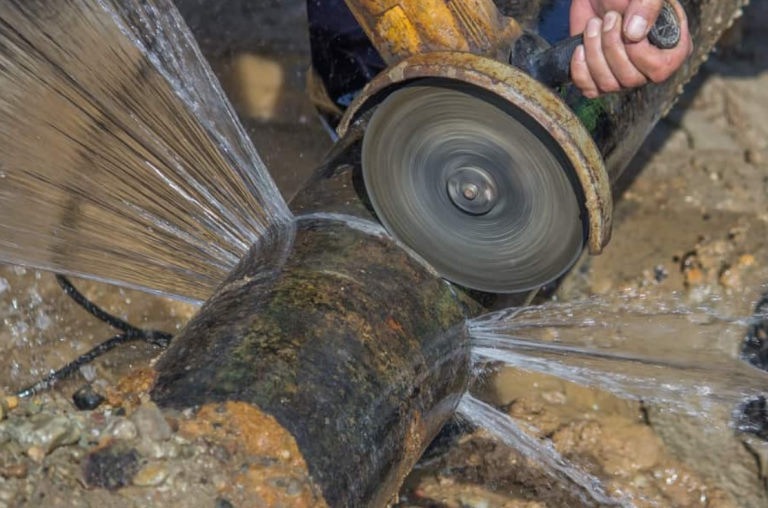
You should choose an angle grinder if your project involves a lot of work on heavy-duty materials, like removing rust, sharpening tools, or grinding hardened steel, etc.
Provided that you choose the right disc, you can use this high-powered hand tool for various materials. For example, an angle grinder with a cut-off disc can work on cast iron, rebar, aluminum, tile, stainless steel, or concrete.
However, this tool is much more dangerous than a sander. Plus, you have to spend a lot of time learning how to use an angle grinder correctly and safely before executing your project.
When To Choose A Sander?
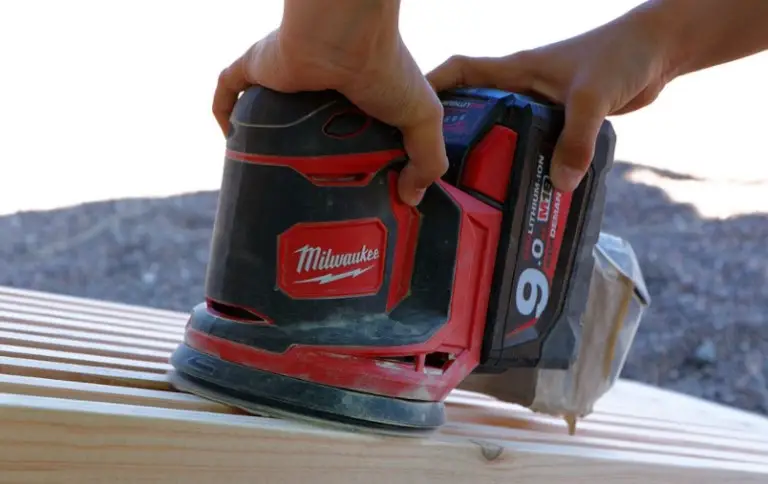
Choose a sander if you are about to shape, smoothen, and polish soft materials, especially wood. This lower-powered tool is safe and easy to use, and it is compact for hassle-free transportation and maneuverability.
A sander can effectively sand a sizable wooden surface with higher precision. However, since this tool generates a lot of sawdust, you should wear a protective mask while working with it.
And remember to choose a sander with a dust collection system to avoid inhaling too much dust.
Extra info: Specific uses for different types of sander
| Types of sanders | Pros | Cons | Uses |
| Belt sander | – Can cover wide areas;
– Easy to use for beginners; – Can work on wood and metal. |
Can’t do detailed sanding. | Sanding floor |
| Disc sander | – More suitable for smaller surfaces & detailed material removal;
– Easy to remove the abrasive pad; – Disc rotates (not just back & forth). |
– Small abrasive pads might take you longer to finish large surfaces. | – Repairing or polishing cars;
– Painting on the auto industry. |
| Random orbital sander
(Oscillating sander) |
– Can sand small and large surfaces.
– Can work on wood and metal. |
– Expensive
– Can’t smooth edges or straight lines. |
– Repair car bodywork on the auto-repairing industry;
– Sanding floors on the construction industry |
| Detail sander | – Work effectively on tight, edges, corners, detailed areas;
– Lightweight, easy to use. |
– Hard to work on large surfaces and large-scale areas. | Restoring old cars |
| Drum sander | – Versatile and efficient;
– Can work on wood. |
– Not travel-friendly;
– Expensive |
– Shaping wood;
– Removing paint from metal surfaces. |
| Spindle sander | – Good to sand tiny edges on small or complex workpieces;
– Can shape, sand, and smoothen wood. |
– Not for large-scale workpieces;
– Expensive. |
Shaping frames, trim, door, and cupboard edges. |
FAQs (Frequently Asked Questions)
1. Can angle grinders be used as sanders?
When installing flap discs onto an angle grinder, you can use this tool as a sander to sand on lots of surfaces and areas.
2. Can a sander be used as an angle grinder?
No, you can’t. The former can only do sanding jobs, while the latter can complete more kinds of jobs, like cutting, polishing, rough shaping.
3. Can you use an angle grinder to sand concrete?
Yes, you can use it to smooth, level, and polish concrete. To start this job, you need to use a diamond disc, a dust collection attachment, and a vacuum cleaner.
4. Can you use a sander on wood?
Yes, you can use it to smoothen wood or remove paint on wooden furniture. An electric sander can get this job done faster with less labor effort than hand-sanding.
Final Words
After reading through this detailed comparison on angle grinder vs sander, I hope you have understood the key similarities and differences between these two tools.
In sum, choose a sanding tool if you only need to make a smooth finish on soft materials like wood. However, if you need to work on hard materials or need a multi-functional tool that can cut, polish, and sand, you should go for an angle grinder.
